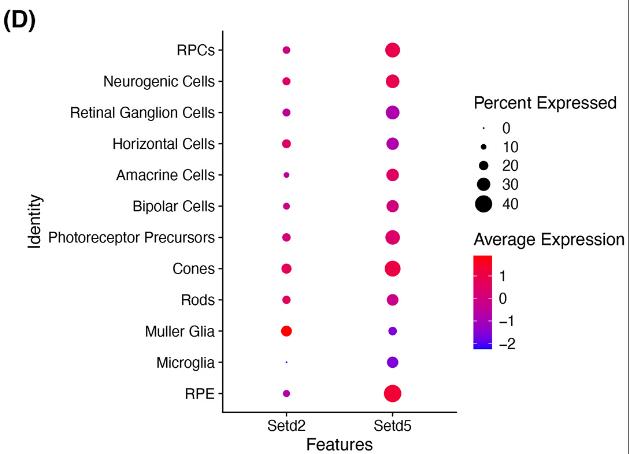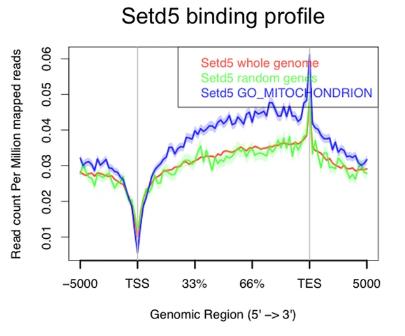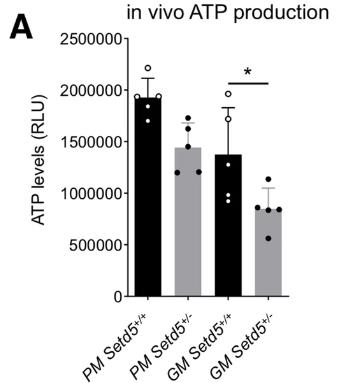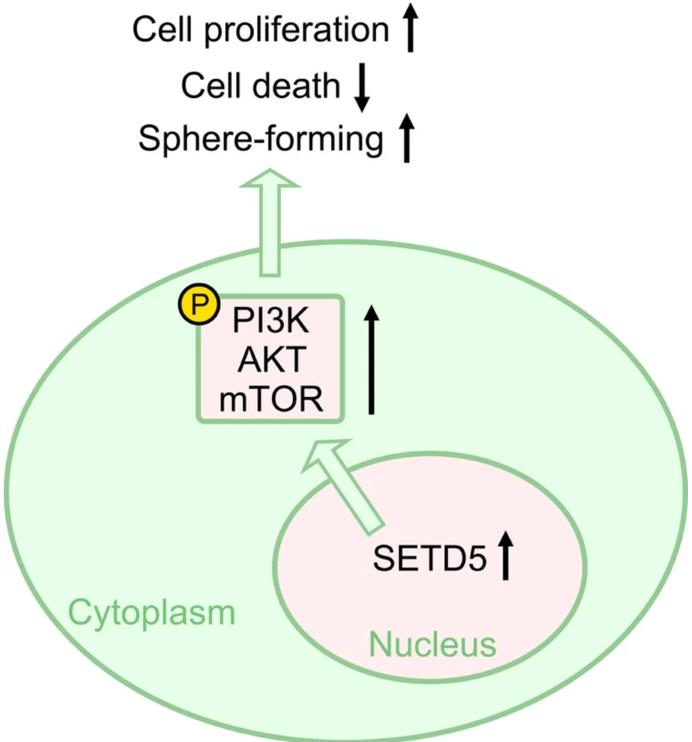Recombinant Mouse SETD5 Protein
| Cat.No. : | SETD5-14982M |
| Product Overview : | Recombinant Mouse SETD5 full length or partial length protein was expressed. |
- Specification
- Gene Information
- Related Products
- Case Study
- Application
- Download
| Species : | Mouse |
| Source : | Mammalian Cells |
| Tag : | His |
| Form : | Liquid or lyophilized powder |
| Endotoxin : | < 1.0 EU per μg of the protein as determined by the LAL method. |
| Purity : | >80% |
| Notes : | This item requires custom production and lead time is between 5-9 weeks. We can custom produce according to your specifications. |
| Storage : | Store it at +4 ºC for short term. For long term storage, store it at -20 ºC~-80 ºC. |
| Storage Buffer : | PBS buffer |
| Gene Name | Setd5 SET domain containing 5 [ Mus musculus ] |
| Official Symbol | SETD5 |
| Gene ID | 72895 |
| mRNA Refseq | NM_028385.1 |
| Protein Refseq | NP_082661.1 |
| MIM | |
| UniProt ID | Q5XJV7 |
| ◆ Recombinant Proteins | ||
| SETD5-3845H | Recombinant Human SETD5 protein, His-tagged | +Inquiry |
| SETD5-4165R | Recombinant Rhesus monkey SETD5 Protein, His-tagged | +Inquiry |
| SETD5-8069M | Recombinant Mouse SETD5 Protein, His (Fc)-Avi-tagged | +Inquiry |
| SETD5-14982M | Recombinant Mouse SETD5 Protein | +Inquiry |
| SETD5-3982R | Recombinant Rhesus Macaque SETD5 Protein, His (Fc)-Avi-tagged | +Inquiry |
Case 1: Iwagawa T, et al. FEBS Lett. 2023
Histone H3 trimethylation at lysine 36 (H3K36me3) marks active transcription. Using mouse retinal cultures and shRNA, researchers studied the impact of Setd2 and Setd5, H3K36me3 methyltransferase enzymes, on retinal development. They discovered that suppressing Setd5 led to structural defects and a decrease in rod and Müller cells, while Setd2 silencing had no effect. A SETD5 variant without the SET domain couldn't reverse the defects caused by shSetd5, but a mutant form, SETD5S1257*, which doesn't bind HDAC3 and PAF1, partially restored proliferation but not the apoptosis triggered by shSetd5.

Fig1. Dot plot showing the expression of Setd2 and Setd5 for each retinal cell type.

Fig2. SETD5, SETD5∆SET or SETD5S1257* and EGFP were overexpressed in the Setd5KD retina at E17.
Case 2: Zaghi M, et al. Mol Autism. 2023
Neurodevelopmental disorders (NDDs) are diverse, stemming from various molecular and cellular dysfunctions. A growing body of evidence links NDDs to epigenetic factors, and mitochondrial issues are prevalent among affected individuals compared to the wider population.
In this study, researchers examined neural stem cells in vitro and the brain of a Setd5-deficient mouse model, assessing the transcriptome, mitochondrial structure, composition, dynamics, and function. They found that reduced SETD5 enzyme levels led to mitochondrial impairment, characterized by fragmented mitochondria, decreased membrane potential, and lower ATP synthesis in both neural precursors and neurons. Additionally, mitochondria were incorrectly localized in neurons with the mutation, resulting in fewer organelles in neurites and synaptic regions.

Fig1. Density plot for SETD5 ChIP-seq signals on the gene bodies.

Fig2. In vivo ATP production from isolated mitochondria from the cortex.
The SETD5 protein contains a SET domain, a highly conserved sequence found in many proteins involved in chromosome modification, and is often associated with histone methyltransferase (HMTase) activity. SETD5 regulates enhancer activation during cell differentiation by binding to the NHOR-HDAC3 co-inhibitory complex. Prior to enhancer activation, SETD5 protein levels were briefly increased and then rapidly degraded, providing a mechanism for enhancer activation.
As a possible histone methyltransferase, the role of SETD5 in regulating gene expression is the focus of research. By studying the recombinant mouse SETD5 protein, scientists can gain a deeper understanding of its role in histone methylation and enhancer activation. Through immunoprecipitation and mass spectrometry, the researchers found that SETD5 interacts with a variety of proteins, including NCoR, SMRT, TBL1, TBLR1, SKI, and HDAC3. These interacting proteins provide new insights into the function of SETD5. Recombinant mouse SETD5 proteins can be used in high-throughput screening experiments to search for small molecule compounds that can regulate SETD5 activity, providing potential targets for the development of new drugs. By co-transplanting 3T3-L1 preadipocytes with recombinant mouse SETD5 protein into nude mice, the researchers were able to study the effects of SETD5 on adipocyte differentiation in an in vivo model.

Fig1. Schematic diagram of SETD5 in colorectal cancer via PI3K/AKT/mTOR pathway. (Xiaohua Zhou, 2024)
Fig2. Roles of SETD5 in regulation of nervous system development, embryonic development and tumorigenesis. (Mingyang Li, 2023)
Not For Human Consumption!
Inquiry
- Reviews
- Q&As
Ask a Question for All SETD5 Products
Required fields are marked with *
My Review for All SETD5 Products
Required fields are marked with *
Inquiry Basket


